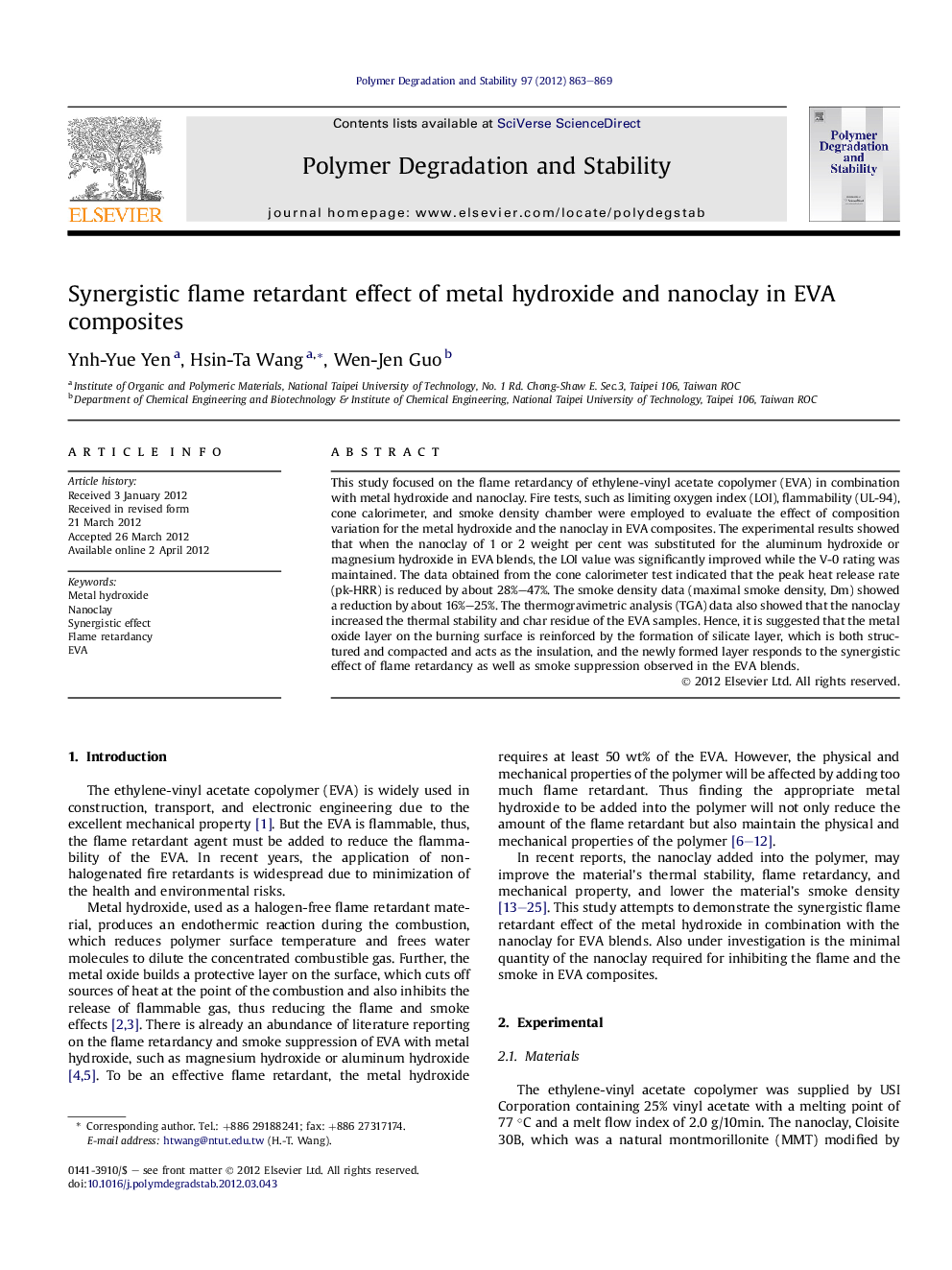| Article ID | Journal | Published Year | Pages | File Type |
|---|---|---|---|---|
| 5202793 | Polymer Degradation and Stability | 2012 | 7 Pages |
This study focused on the flame retardancy of ethylene-vinyl acetate copolymer (EVA) in combination with metal hydroxide and nanoclay. Fire tests, such as limiting oxygen index (LOI), flammability (UL-94), cone calorimeter, and smoke density chamber were employed to evaluate the effect of composition variation for the metal hydroxide and the nanoclay in EVA composites. The experimental results showed that when the nanoclay of 1 or 2 weight per cent was substituted for the aluminum hydroxide or magnesium hydroxide in EVA blends, the LOI value was significantly improved while the V-0 rating was maintained. The data obtained from the cone calorimeter test indicated that the peak heat release rate (pk-HRR) is reduced by about 28%-47%. The smoke density data (maximal smoke density, Dm) showed a reduction by about 16%-25%. The thermogravimetric analysis (TGA) data also showed that the nanoclay increased the thermal stability and char residue of the EVA samples. Hence, it is suggested that the metal oxide layer on the burning surface is reinforced by the formation of silicate layer, which is both structured and compacted and acts as the insulation, and the newly formed layer responds to the synergistic effect of flame retardancy as well as smoke suppression observed in the EVA blends.
